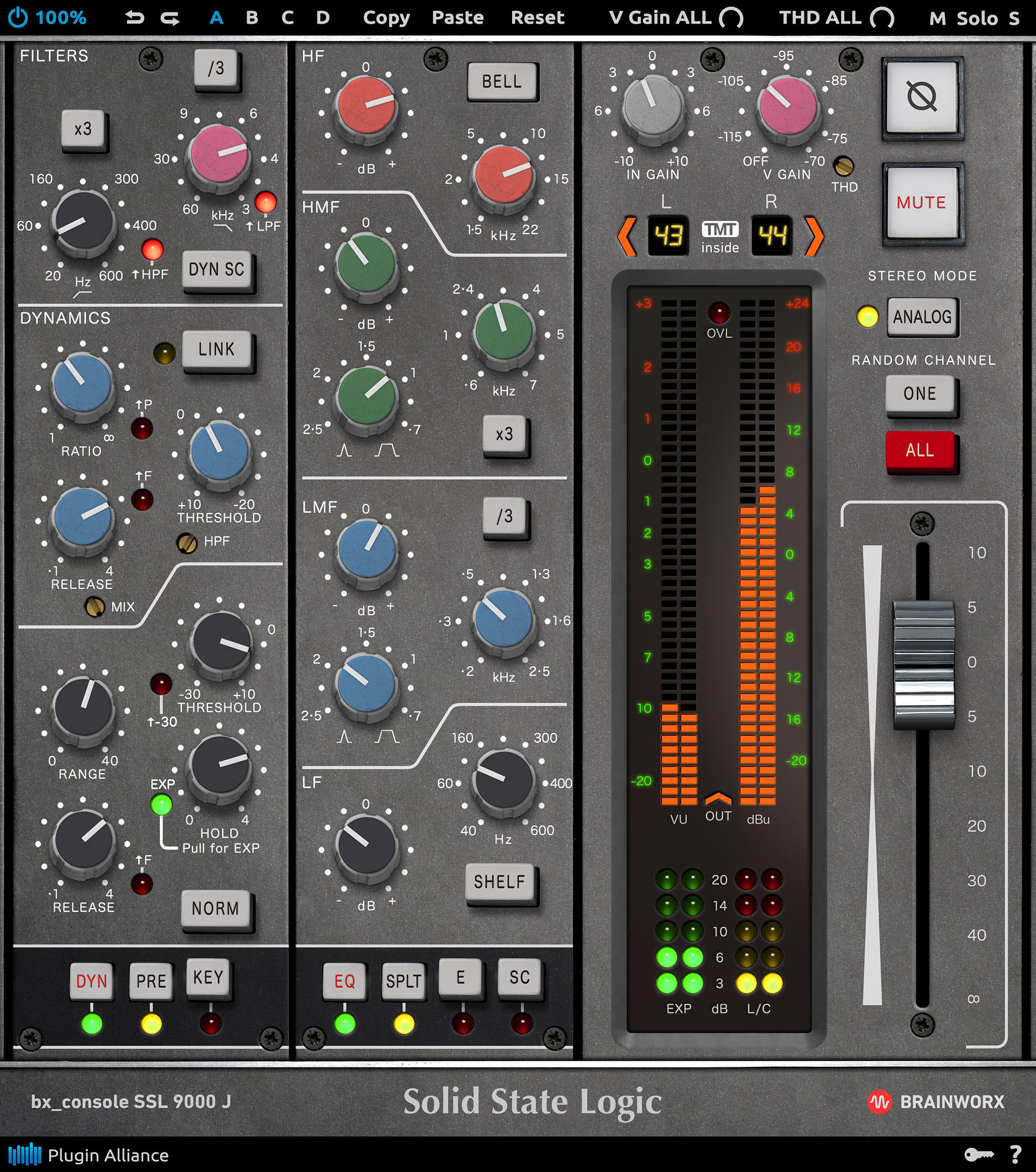

So you have a range to control how much expansion is going on. With my expander that I’ve got going on, I’m trying to the same, similar sort of thing. I have a slow attack because what I want to have happen is the transient of the signal to pass without being compressed and then the tail of the signal to be compressed a lot, and what’s that’s gonna do is emphasize the transient, make the drums a little bit more punchy. Medium release time, I’m gonna be setting the threshold to find that I can just get, you know, a couple of dB of gain reduction. For my kick drum I just have, you know, 3 to 4 dB of gain reduction. And then you have, you can switch between fast attack and fast release. basic controls you have for the compressor: ratio, threshold, release. In the dynamics section, that’s what happens next, is there’s an SSL style compressor, SSL style gate or expander. Taking off a little bit of the high end because I don’t really need it for a kick drum. What I’m doing is just rolling off a little bit of the low end to tighten up in case there is just some low rumble going on in my signal. There’s a high pass filter and low pass filter. The way I’ve got it set up is I’ve got these filters first as the first thing that happens when the audio enters the plugin. You can change the internal routing so you can put the EQ before the dynamics or the dynamics before the EQ. So with the SSL G-Channel, there’s an EQ section and a dynamics section. So let me go through each of the instruments and show you briefly what I’m doing to kind of tighten up the drum sound and also give you an idea about the features of the plugins. So on their own without any processing the drums sound pretty good, but they’re gonna be a bit of work if they’re gonna sit in a mix. Let me play you back the audio so you can hear how it sounds without any processing. And I’m gonna be using the SSL compressor just to add a slight bit of limiting to make sure that I’m not clipping the combined signal. And these are both going into my drum buss auxiliary bus going on over here. I’m gonna run these two in parallel, kind of mix them together to find the balance of what I like. And I’m gonna be just doing almost no compression on this channel, but then on my other auxiliary channel I have compression over here, I’m gonna be doing a lot of compression. So I have a clean auxiliary bus here that the outputs of these audio tracks are going into.

On each of the audio tracks I went ahead and inserted the SSL G-Channel I’m gonna be using here in the first insert slot.Īnd then I have some special routing going on because I’m gonna be doing parallel compression on my drum mix. And then I have an audio track here - a stereo track of printed reverb from an outboard reverb unit. Here you’ll see I have 7 tracks of recorded audio from microphones I have a kick in mic, kick out, snare top, snare bottom, stereo pair of overheads, stereo pair of rooms.

You can use these on sessions up to 96 kHz and up to a 24-bit depth. There is mono and stereo versions of the plugin that’s included. They support TDM, RTAS, Audiosuite, VST, and AU plugin formats. These plugins as part of the Waves SSL 4000 Bundle.
#Waves ssl bundle how to
This is a demonstration on how to use the Waves SSL G-Channel Strip and G Master Buss Compressor to mix a multitrack drum recording.


 0 kommentar(er)
0 kommentar(er)
